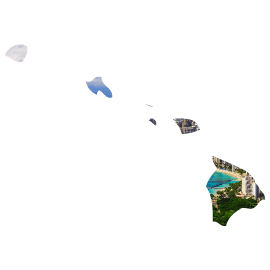Pension Sustainability: Hawaii
Retaining Effective Teachers Policy
Analysis of Hawaii's policies
As of June 30, 2010, the most recent date for which an actuarial valuation is available, Hawaii's pension system for teachers is 61.4 percent funded and has a 41.3-year amortization period. This means that if the plan earns its assumed rate of return and maintains current contribution rates, it would take the state more than 41 years to pay off its unfunded liabilities. Hawaii's amortization period significantly exceeds the regulatory benchmark of a 30-year period, and its funding level is too low. The state's system is not financially sustainable according to actuarial benchmarks.
In addition, Hawaii commits excessive resources toward its teachers' retirement system. The current employer contribution rate of 15 percent is too high, even before the additional 6.2 percent contribution that the state must make to Social Security. The rate is determined according to statutory requirements, which mandate that the employee and employer contribution rates are set with the intention to fund this year's expenses (the normal cost) plus any amount needed to amortize any unfunded liabilities over a 30-year period; when the amortization period is over 30 years the employer rates are subject to adjustment. The employer rate will increase incrementally to 17 percent for the 2015-2016 fiscal year. The current mandatory employee contribution rate to the defined benefit plan of 6 percent is reasonable; however, the rate for new employees hired as of July 1, 2012, is slightly high.
Recommendations for Hawaii
Ensure that the pension system is financially sustainable.
The state would be better off if its system was over 95 percent funded and had an amortization period of less than 30 years to allow more protection during financial downturns. However, Hawaii should consider ways to improve its funding level without raising the contributions of teachers. In fact, the state should work to decrease employer contributions. Committing excessive resources to pension benefits can negatively affect teacher recruitment and retention. Improving funding levels necessitates, in part, systemic changes in the state's pension system. Goals 4-G and 4-I provide suggestions for pension system structures that are both sustainable and fair.
State response to our analysis
Hawaii recognized the factual accuracy of this analysis. The state was also helpful in providing facts that enhanced this analysis.
Select another topic
Delivering Well Prepared Teachers
- Admission into Preparation Programs
- Elementary Teacher Preparation
- Elementary Teacher Preparation in Reading Instruction
- Elementary Teacher Preparation in Mathematics
- Middle School Teacher Preparation
- Secondary Teacher Preparation
- Secondary Teacher Preparation in Science
- Secondary Teacher Preparation in Social Studies
- Special Education Teacher Preparation
- Assessing Professional Knowledge
- Student Teaching
- Teacher Preparation Program Accountability
Expanding the Pool of Teachers
Identifying Effective Teachers
- State Data Systems
- Evaluation of Effectiveness
- Frequency of Evaluations
- Tenure
- Licensure Advancement
- Equitable Distribution

